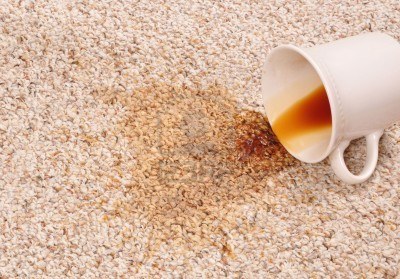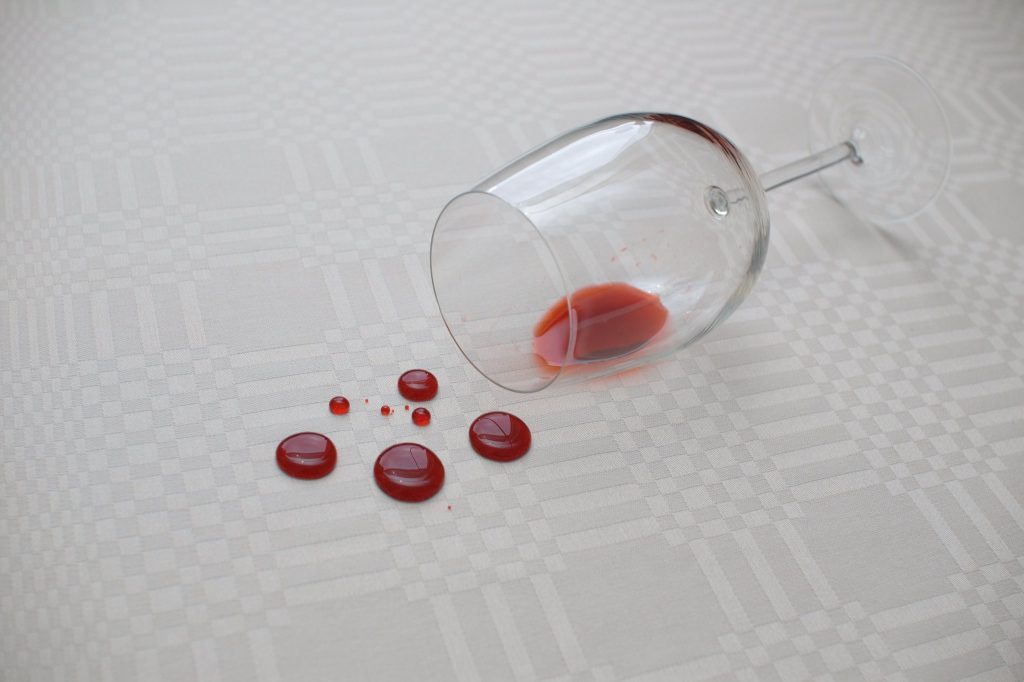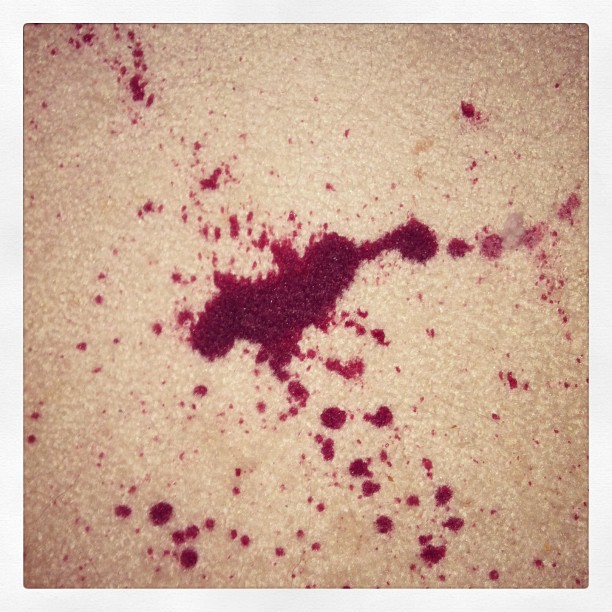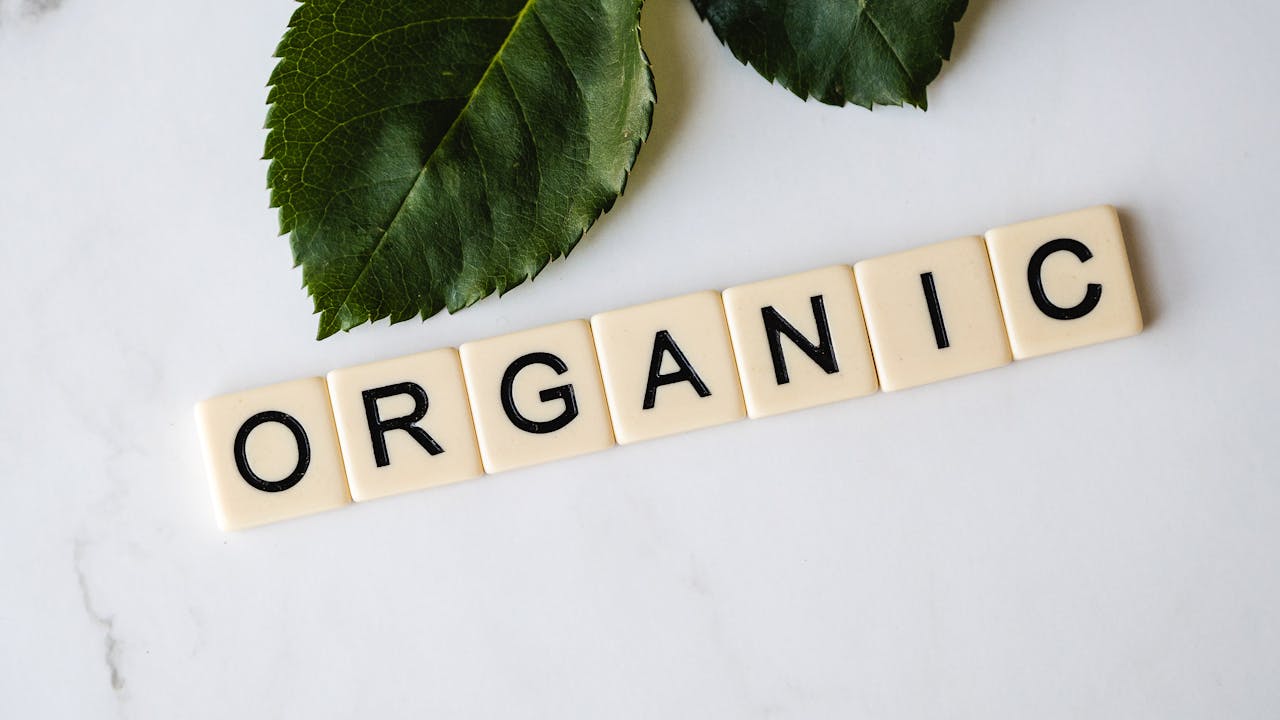Use Natural Products to Clean Surfaces and Remove Stains
If you are not a fan of commercially supplied chemicals (FYI, your average conventional cleaning product under the sink is most likely a commercially supplied chemical), then you will find the list below quite useful. Cleaning your home does not have to endanger your health. Our whole environment is polluted with chemicals, so bringing some nasty fumes and residues during house cleaning is a must not.
Here is my comprehensive list of various stains and their respective removal tips.
Avocado Stain
Act quickly. Rub the stain with soap and warm water to make a lather, and leave it to sit a while before washing. If the stain persists after one wash, rub glycerine into the spot and wash again. Avocado stones are particularly staining, so don’t cut them in half.
Blood Stain
The best method is fresh, cold water. If you have blood on an item of clothing, soak it overnight in cold water. When cleaning blood stains from carpet fibres, sponge the area with lots of cold water before blotting dry.
Beetroot Stain
Given its brilliant colour, beetroot is easier to wash out than you might think. Ordinary soap and water will do the trick, in this writer’s experience. Fresh beetroot can be pretty staining to the skin, so if you have been chopping or grating fresh beetroot, wash your hands thoroughly afterwards, possibly using a scrubbing brush and an exfoliating soap (e.g., one with oatmeal) before going near paper or anything pale-coloured.
Chewing Gum Stain
First, freeze the chewing gum hard by holding an ice cube over the spot (it takes at least 10 minutes, so be patient). Then, pick off as much as you can, using fingernails and a blunt knife. Garments can be put directly into the freezer and frozen solid. Any residue can be sponged with vinegar before washing as usual.

Coffee Stain
Flood the stain or spill with lots of cold water before washing. To clean carpets, blot the excess water with a towel after flooding the spill site. This usually does the trick, but if any residue remains, rub a little soap onto the site and scrub the carpet gently, working the soap up to a foam. Blot with fresh water again to remove the foam. Allow drying.
Egg Yolk Stain
As this is a protein stain, treat it with cold water. Soaking overnight, followed by regular washing, tends to work for most items. However, a small greasy stain may remain. Treat this by rubbing a paste of baking soda and salt into the spot and allowing it to dry before washing as usual.
Grass Stain
Remove grass stains by rubbing strong alcohol into the spot and allowing it to “sit” before washing as usual. Alternatively, rub Sard Wonder Soap (if you can get hold of it) onto the site and work it up to a lather. Allow it to sit for at least ten minutes before washing as usual. Nasty grass stains (usually the main reason for cleaning sports clothes) may require soaking overnight in warm, soapy water and regular treatment.
Ink Stain
Ballpoint pen ink washes out in the regular wash, as anyone who tried to decorate a pair of jeans on the cheap by doodling on them found out. It may take several washes. If you’re in a hurry, apply a bit of strong alcohol, such as rubbing alcohol or vodka.
Mildew Stain
Items with nasty mildew should be thrown away. Mild mildew can be treated by rubbing the spot with lemon juice and putting the item in the sun. This kills the mould spores. Vinegar also works, but it has less bleaching action so that it may be suitable for coloured or black items.
Oil Stain
Many oil, grease or fat stains can be treated by scrubbing the site of the stain with warm, soapy water until it lathers. Treat the stain with baking soda and eucalyptus essential oil paste if the stain persists. Allow this paste to dry before washing as usual.
Permanent Marker Stain
Douse the site with strong alcohol as soon as possible, then soak or wash before the alcohol evaporates. Many people claim that hair spray also works to remove permanent markers.
Poo Stain
Scrape off as much as possible with toilet paper. Rubbing a paste of baking soda and water into the site using rubber gloves to remove the smell and any fatty residues. Allow this to dry before washing as usual. Dry in full sunshine to kill any remaining germs.

Red Wine Stain
Immediately scatter salt over the spill to absorb as much as possible. Leave for half an hour (or until dry) before sweeping or vacuuming up the salt. Be generous with the salt. Alternatively, flood the spill with white wine or freshwater (or soda water) to dilute the red and blot it with a towel. Flood with more fresh water and continue blotting until the stain disappears.
Tar Stain
It’s not strictly natural, but a little kerosene works wonders. Alternatively, try freezing the tar hard with an ice pack before scraping and picking it off. Glycerine or vegetable oil can soften the tar, followed by eucalyptus essential oil. Leave the essential oil to work in and try scraping again.
Urine Stain
Sponge with vinegar before washing.
Vinegar Stain
This is a stain remover in its own right, so it doesn’t stain! Balsamic vinegar may stain, but sponging the site with white vinegar will dilute it. Wash as normal.
Perspiration Stains
- 1 cup of vinegar
- ¼ cup salt
- Eight drops of essential oil of choice (optional)
Combine the ingredients and let the salt dissolve. Soak the stain in the mixture, then scrub it gently with an old toothbrush before washing as usual. For cleaning curtains or upholstery, spray the mixture with fresh water several times until the stain has disappeared. Allow to dry as usual (but you can hurry things along on the curtain or the sofa with the help of a hair dryer).
Butter, Cooking Oil or Margarine Stains
Your first resort here is soap and warm water, as soap breaks down grease and fats very well, especially with the help of warm water. Scrub the soap to a lather, but don’t be too vigorous on more delicate materials. Rinse as normal. If the wretched stain still lingers, try rubbing a paste of baking soda and water into the spot and allowing it to dry before washing as usual.
Cleaning Wax Spills
Another greasy stain that turns up all over the place. If the wax is still liquid (it just spilt), freeze it hard with ice cubes before it has time to work its way into the fabric or fibres of whatever you spilt it on. If it’s already hard, proceed to the next step, which is to pick it off with the help of your fingernails and a blunt knife blade. A little bit will remain. You need the help of an iron set on low and a stash of paper towels or loo paper. Cover the site of the spill with a paper towel, preferably putting one paper towel on each side of the item, although you can’t do this when cleaning wax off carpets for obvious reasons. Melt the remaining wax by pressing the iron onto the site through the paper towel. Repeat with a fresh paper towel (or a bit of paper towel) until no more wax comes out. A small mark may remain. Treat this as you would any other grease stain (see above).
Don’t bother trying to clean wax off a wooden floor – rub the wax in. It will do the wood a lot of good.

Lipstick Stains
Some people swear by glycerine as the best natural method for removing lipstick stains. Others prefer strong alcohol, such as vodka, methylated spirits, or rubbing alcohol. Whichever method you prefer, rub the stain remover over the site and rub in well before washing as usual. When cleaning lipstick off carpets or curtains (probably courtesy of a small child), this will involve gently scrubbing the spot with warm, soapy water until the stain has gone, then blotting and sponging with fresh water to rinse.
Chocolate Stains
Rub the spot with glycerine and allow this to sink in before scrubbing the spot with soap before rinsing.
Curry Stains
Methylated spirits, vodka, whisky or other strong alcohol. Avoid curry stains and spills on carpets (a natural pest to remove) by restricting eating to one room only – the one with the table in. If you are indulging in a curry in front of the telly, put down a towel or plastic sheet first in case the worst happens.
Milk Stains
Sponge with cold water. After rinsing and drying carpets, sprinkle baking soda over the spot to absorb the horrible smell of sour milk.
Non-traditional Stain Removing Agents That Actually Work
Are you checking through the items on your laundry shelves and seeing if you need to stock up on stain-removal products? You never know – even if your commercial products have run out, you may already have plenty of stain removal products in your house without knowing it. You might also consider switching to these unusual alternatives, especially if you are looking for more environmentally friendly, less toxic methods of cleaning your house.
This list contains more unusual domestic cleaning products and their uses. How many do you have in your cupboards?
Alcohol
This includes methylated spirits, rubbing alcohol, and strong drinkable (?) spirits like vodka and whisky. These are excellent disinfectants for removing ink-based stains. Alcohol is your best friend for removing permanent pen stains. Some varieties of hairspray contain alcohol and can be used to remove stains.
Baking soda
This is such a safe, useful, and versatile cleaner that it’s a wonder commercial cleaning product that has ever made it onto the market. It absorbs smells and is an all-purpose cleaner.
Bread
White bread (preferably stale) can rub greasy marks off wallpaper as an improvised sponge for spills and slips at the table.
Cigarette Ash
This can be mixed into a paste with lemon juice and linseed oil to remove stains from wooden furniture. However, smoking is an appallingly dirty habit, and you’ll do more for the cleanliness of your home (to say nothing of your health) if you quit.
Denture Cleaners
These are good for cleaning more than just false teeth. Leave in the toilet bowl overnight to soak out stains, or use it as a soaking solution for white cotton.

Lemon Juice
A mild bleach, especially if you soak a stain in lemon juice and pop it into sunshine. This works on hair to put highlights in blonde hair and is reputed to fade freckles and other brown marks on the skin.
Meat Tenderiser
This contains enzymes that break down proteins. Use it for any protein-based stain (in cold water), such as blood or egg.
Milk
While some milk products can stain, milk can soak out ballpoint pen marks from fabric. Milk added to water is also suitable for soaking leather accidentally splashed with salt water (salty water can wreck leather). Wash the item in cold water after removing the stain to remove the milk.
Onions And Potatoes
Onions make a cleansing polish for leather goods, including shoes, while the starchy juice of raw potato can be used as a stain-removal stick. You can also use a cut-up potato and baking soda (or salt) to clean rust stains off metal cookware.
Salt
Use salt in the water when soaking protein stains. Salt also absorbs liquid stains – an old remedy for dealing with spills of red wine on tablecloths or carpets. Salt can also act as a mordant for dyes – if you have bought new fabric for dressmaking, put it through the washing machine with salt but not washing powder to help set the dye in (you can also do this with home-dyed items).

Soda Water And White Vinegar
The effervescence of soda water means that it floats the stuff doing the staining up to the top. White vinegar is an old remedy for wine stains on ties and most other things that can get spilt at the table—including blood. It can be a mild bleach that works wonders on mildew and wine stains.
Old-fashioned Stain Removal Techniques That Granny Might Have Used
Stains in the wash are nothing new. If you ever look at a book of old-fashioned remedies for spot and mark removal, you will see that there were more things to spill on clothes, tablecloths, and carpets in the old days than they do now. Ink, for example, was spilt more frequently in those days before ballpoint pens became standard.
Some of these old-fashioned stain removal methods call for obscure – or positively scary – treatments, but other methods are kind, gentle, and well worth a try. Here’s a selection of some more pleasant, easily obtainable methods.
As a brief aside, it’s interesting to note that the heroines in some old English folk tales have to wash stains from garments to win their prince out of the hands of a witch or troll – the feminine equivalent of slaying a dragon, maybe?
Wine on Tablecloth (Old-fashioned Technique)
Wine stains can be removed from a tablecloth by dipping the spots in question into boiling milk. Presumably, this is for old, dry stains, as the usual method of stopping a cloth staining if you spill red wine on it is to sprinkle salt in quantity on the stain or slosh the spill of red wine with white wine.
Natural Ways to Get Rid of Rust Stains (Old-fashioned Technique)
Stains from rust in cloth can be removed with a citric or tartaric acid solution. Alternatively, you can rub the stain with lemon juice and salt and put it in the sun, where the combination of lemon juice and sunlight will lighten the stain.
Tea and Coffee Stains (Old-fashioned Technique)
Boiling water can be poured onto a tablecloth or any other item that can handle it (i.e., not silk, synthetics, or anything containing elastic) to remove coffee stains. This is also supposed to work for tea stains and fruit juice stains. Do this before putting the clothes in the wash.
Ink Stains (Old-fashioned Technique)
Ink stains (because we all use fountain pens occasionally, and biros left in pockets can leak) should be dabbed with turpentine, and this should be left to work on the stain before popping the item in the wash. The other method suggested in old books is to drip melted tallow onto the ink spill, with the advice that when the fat washes out, the ink will wash out with it. Unfortunately, the book does not say how to remove the tallow!
One of the more alarming suggestions for removing ink stains from hands was to put a few drops of sulphuric acid in water and soak your hands in this, with the only warning being to avoid getting the acid on your clothes. A much gentler alternative was to use cream of tartar and powdered sorrel leaves (sorrel being a source of oxalic acid). Pumice soap is also suggested for getting the ink off hands – manual labourers often use this soap, and you can make your own by grating and melting ordinary soap, then adding crushed pumice stone to the melted mix before pouring the goop into a mould and leaving it to set.
Removing Tar from Clothes (Old-fashioned Technique)
Several remedies are suggested for getting tar stains out of clothes. Butter is supposed to be the best method, but another suggestion is liquorice powder mixed with essential oil of aniseed (no guarantees here, but the wash will smell lovely afterwards). From personal experience, kerosene is probably the best thing to get tar/bitumen off. Bitumen is often “cut back” with kerosene before being applied to the road and is soluble in kerosene. It stinks, but the smell and the stain will wash out without much bother.
Removing Greasy Stains with Hartshorn (Old-fashioned Technique)
Hartshorn appears in many old pieces of advice for stain removal. It is used to remove greasy stains from the necks of coat collars, wine stains on coloured items, and any stain from acid. Hartshorn is a form of ammonia, with “spirits of hartshorn” being ordinary household ammonia and “salt of hartshorn” being either ammonium chloride or ammonium carbonate.
Final Words from Nick
I hope you enjoyed reading the above guide. However, here is my word of caution.
The stain removal tips provided in this article are based on general knowledge and personal experience. Results may vary depending on the specific circumstances and materials involved. Always test a small, inconspicuous area before applying any cleaning method to a larger surface. What worked for me may not necessarily work for you. The author and publisher of this article are not responsible for any damage or adverse effects resulting from the use of these tips. Use these suggestions at your own risk and discretion. For particularly delicate or valuable items, consider consulting a professional cleaner.

